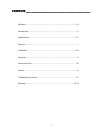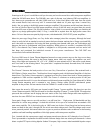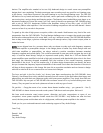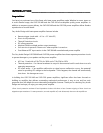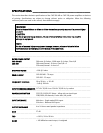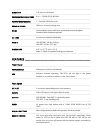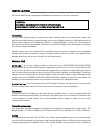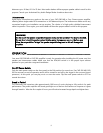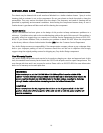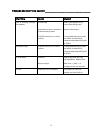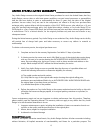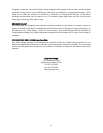3
WELCOME__________________________________________________________
Greetings to all of you! I would like to tell you the story on how the mono bloc solid state power amplifiers
called the 500 MB came about. The 500 MB’s are a pair of discrete, true balanced 500 watt amplifiers. In
fact, these music powerhouses will yield 1,000 watts at a 4 ohm load. What, solid state from the triode
tube crazed Dennis Had, some may ask? If someone had asked me 16 years ago when I started Cary
Audio, ‘Are you going to build high power transistor amplifiers?’ My response would have been almost in
the form of a lecture about how high power amplifiers corrupt. If the first watt is no good than why would
you want 499 more of them? Oh, the self-righteous 'tube-o-phile' in me would have kept you listening all
night to my design philosophies. Well, if I may, I would like to explain how this high power craze came
about. Or how I became corrupted by high current, wide bandwidth, SOLID STATE power amplifiers…
About six years ago, Gregg Dunn, our Cary Audio sales manager joined the company. Although he loved
tubes in audio he felt we needed to seriously enter the home theater market place. Gregg convinced Billy
and I that with our reputation for having the best sounding two channel tube gear, we could design and
become the best in multichannel solid state amplifiers. Within about six months I completed the CAD
500T, a five channel Cary Cinema amplifier. It weighed in at 168 pounds, measured over two and a half
feet deep and contained five individual monster EI core power transformers. The CAD 500T was
constructed of all machined aluminum.
The June 1999 issue of
Home Theater
Magazine featured our new monster amp on the front cover along
with a glowing review. We were in the home theater arena. Well, not exactly, the amplifier was sooo
heavy, sooo large and expensive (30” x 19” x 14”, $8,000) no one wanted to lift it. We sold a couple dozen
and I was back to the drawing board. Two years later I completed the sleek, slimmed down, five channel
Cinema 5 power amplifier.
The Cinema 5 became the lead product of our new Cary Cinema line of products. We received both a
2003 Editor’s Choice award from
The Absolute Sound
magazine and a Multichannel Amplifier of the Year
Award from
The Perfect Vision
magazine! It repeated as a Best Buy Award from both of those prestigious
magazines in 2004 and has repeated for 2005! The Cinema 5 continues to receive product of the year
awards around the world. It is now the reference multichannel power amplifier for Peter Moncrieff of
Wide
Screen Review
magazine and it unseated a very famous foreign made $11,000 multichannel power
amplifier in the process. Did we mention that the CINEMA 5 is made in North Carolina?
Next came the seven by 100 watts per channel model Cinema 7 power amplifier. We have just won the
Home Theater
magazine, 2005 Rave Award for the Best Amplifier (Cinema 7) under $3000. The enthusiast
press and the customers are all singing the sonic merits of the Cary Audio Design solid state amplifiers. It
was time for some SERIOUS two channel stereo action with this design.
Once again, Gregg came to me with an idea. I can still hear him…. “High power, full bandwidth and low
distortion in a mono amp package”. He had this wild look in his eye as he insisted that we needed a 500
watt mono amplifier. Oh, it also had to play at 1,000 watts into 4 ohms. Since Gregg has had some serious
home run ideas in the past, I thought OK, let me do some basic design work. Soon the design work turned
into a personal passion: An intense desire on my part to produce absolute sonic excellence in the listening
qualities and load handling capabilities of this high power, solid state power amplifier.
First, I started with the same power supply and power transformer that ran all 5 channels of our Cinema 5.
Then I proceeded to implement the basic emitter follower design that was winning all the awards. I chose
direct coupled FET inputs driving bipolar Sanken 50 ampere, high current, wide bandwidth bipolar output




